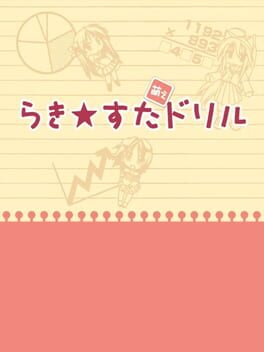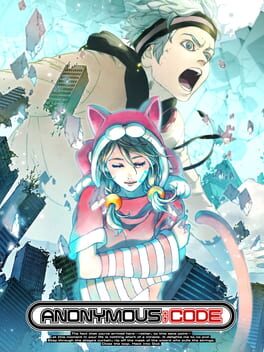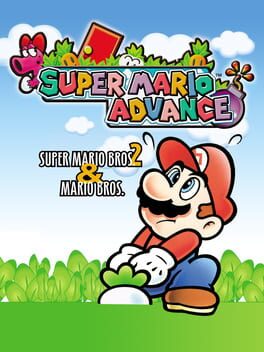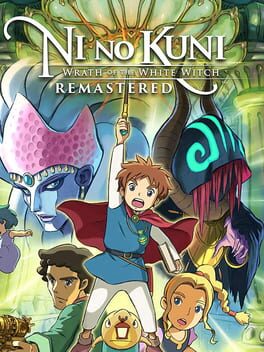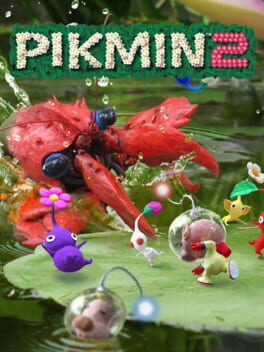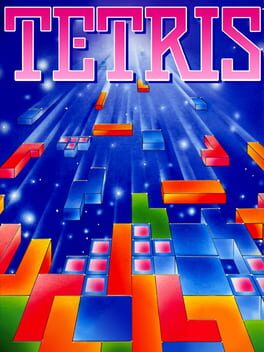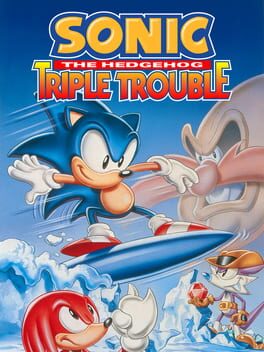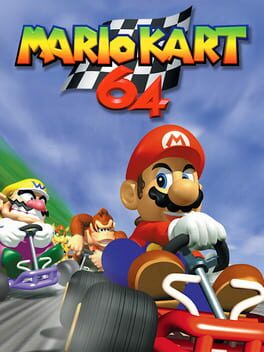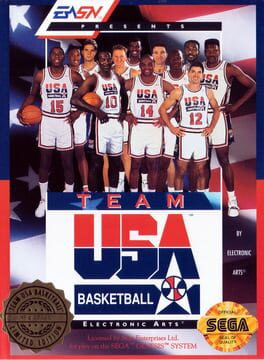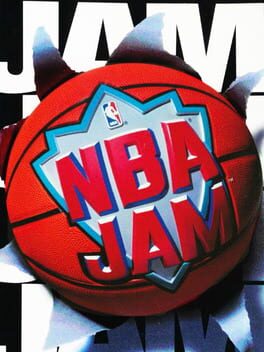beifeng
132 reviews liked by beifeng
Dragon's Dogma II
2024
Having never played the first Dragon's Dogma, I was relatively surprised to see the buzz Dragon's Dogma 2 was receiving on social media up to and after its release. In addition to the normal marketing materials, users that had bought and played the game were almost uniformly glowing in their assessment of the title. Twitter was abound with clips of their exciting battles and exploits, and the phrase "Game of the Year" had been bandied about. Now, recency bias is a potent thing, but I was certainly intrigued by this reception. So, after making the conscious effort to temper my expectations, I bought the game and dove in.
There's a lot of elements to Dragon's Dogma 2 that impress. Chief among them is that the game has a complete and total commitment to immersion. Going through the quests, both side and main, demands an approach in which the player views them as events coherent with the world as if it was a real environment and not a complete work of artifice. The game leaves things up to the player's common sense to suss out, which is much more satisfying than endless prompts and quest markers that have become standard in open world games over the past couple of decades.
This is an attitude that permeates much of the game's design. Fast travel, while possible, is minimized in an effort to make players immerse themselves in the world. At times inconvenient mechanics such as encumbrance and the effort needed to make a safe campfire for resting are real concerns of would-be adventurers that other titles regularly choose to gloss over. Monsters aren't drones lurking in designated places doing nothing until activated by the player. Instead they are convincingly wild in the ways they show up unexpectedly in would-be "safe" areas such as towns, or they are much stronger and larger than the player could ever hope to be at the time of their chance encounter.
There's many more examples one could list, but when playing Dragon's Dogma 2 you feel like an adventurer in a fantasy world with all of the responsibilities that would entail. It's not always easy or glamorous, but that's why it's an adventure and not a theme park.
This approach to design is so respectable that it breaks my heart that the moment-to-moment gameplay of Dragon's Dogma 2 has been so utterly fumbled.
Combat is an integral part of the experience that no player could possibly hope to avoid, and yet it is so bland. Physical attacks carry no weight in their hits, magic barely registers as connecting, and monster health pools can be so large that encounters regularly feel like slogs. The pawns one can hire have the potential to carry the player even while below their level, thereby removing any feeling of contributing to a fight at all.
While problematic on its own, this flaw is doubly severe in how it compounds the issues Dragon's Dogma 2 already has. With players not having so many fast travel options, at least in the early game, they will be traveling on foot quite often. This, in turn, means they will be getting into many combat encounters. Exploration is thereby discouraged, as excursions out into the wild bring with them the drudgery of combat. In turn, viewing monsters as boring instead of threatening shatters the immersion the fast travel decision was supposed to promote in the first place.
This is not the only example of poor game design clashing with the mission statement of the game. Pawns, as a system, are a baffling choice to me. The developers want players to feel engrossed in their world, but the pawn system is one of the most grossly artificial I could conceive of. While there are in-universe explanations for their existence, the amount of player-made mommies I encountered with immersion breaking names scuttled that meager effort almost instantly.
It's not only the intrusion of other players' inclinations into my fantasy world that makes the pawn system a poor design choice. The adventuring party, as a concept, has been central to the RPG genre all the way back to early titles like the first Final Fantasy. The appeal of the party as a mechanic is two fold: In terms of gameplay, one can balance their approach with characters of different specializations. In terms of story, many players enjoy growing alongside and getting to know their certain characters over a game's runtime. The pawn system of Dragon's Dogma 2 executes the first premise decently enough, though it's not so necessary when the player can change their own class so easily, but it actively bungles the second.
With half of my party so blatantly being temporary, man-made golems instead of anything resembling a character it is so hard to accept the party as a legitimate, in-world construction. If I am constantly going to be reminded that most of the people on screen come from the world of XxDickSucker420xX, how in the world is a restricted amount of fast travel going to draw me into the world of the game?
And boy, one will be reminded of that often. The pawns in this game chatter incessantly. They chat about elements of mild import to the player, such as locations of items, and they also chat about absolutely nothing often to comedic effect. The former has its uses, though I still would prefer it toned down in frequency, but the latter is incredibly misguided. For party chatter to be interesting, the party needs to have personality. Pawns, by design, have no personality.
The artificiality of it all cannot be ignored. Even the name, pawn, drives home the point that these are beings with no humanity. So then, why is the game so insistent on contradicting that with attempts at endearment to the player?
The pawn dialogue highlights a separate issue: the writing. The outmoded form of English chosen for the game's dialogue is incredibly jarring. Other series of games and certainly other works from other mediums have certainly gone down this road before; "old English" is nothing new to people who have been around the block. But Dragon's Dogma 2 sticks out as uniquely weird in its phrasing. Rather than sounding natural the dialogue reads as a deliberate attempt at old English.
I'm not particularly interested in discussions of the accuracy of the words themselves. Art exists as a deliberate work by, and as such it is graded on the impressions of legitimacy, taste, and sense it leaves rather than its actual accuracy. Maybe people really did run around saying "yon chest", but in this game it comes across as ham-fisted.
Doubly jarring is the disconnect between this localization and the game's native Japanese. I played with English subtitles to a Japanese dub. I speak both languages. The dub had no attempt at using an archaic, period form of Japanese. To state the obvious, such a thing does exist and has been used for period pieces in the past. Localization discussions are simultaneously outside of my interest and above my pay grade, so all I'll say is that when a script constantly makes me incredulously cock an eyebrow, I am once again being drawn out of the game's world rather than the reverse.
There are other, smaller issues with Dragon's Dogma 2. The design of the monochromatic minimap is not at all a wise choice for dense areas such as towns; spell targeting is finicky at best; and the camera draws in too close during combat to properly see enemies. These, however, are not glaring flaws. No game is perfect, and most foibles are easily forgotten.
The reason I find Dragon's Dogma 2 to be so disappointing is that there is a clear indication of what the developers wanted to do with their game and how they wanted the player to experience it. The clashing of that intent with various mechanical decisions is a death knell, and a good example for others on how games must be coherent packages if they are to rise to the top of their field.
There's a lot of elements to Dragon's Dogma 2 that impress. Chief among them is that the game has a complete and total commitment to immersion. Going through the quests, both side and main, demands an approach in which the player views them as events coherent with the world as if it was a real environment and not a complete work of artifice. The game leaves things up to the player's common sense to suss out, which is much more satisfying than endless prompts and quest markers that have become standard in open world games over the past couple of decades.
This is an attitude that permeates much of the game's design. Fast travel, while possible, is minimized in an effort to make players immerse themselves in the world. At times inconvenient mechanics such as encumbrance and the effort needed to make a safe campfire for resting are real concerns of would-be adventurers that other titles regularly choose to gloss over. Monsters aren't drones lurking in designated places doing nothing until activated by the player. Instead they are convincingly wild in the ways they show up unexpectedly in would-be "safe" areas such as towns, or they are much stronger and larger than the player could ever hope to be at the time of their chance encounter.
There's many more examples one could list, but when playing Dragon's Dogma 2 you feel like an adventurer in a fantasy world with all of the responsibilities that would entail. It's not always easy or glamorous, but that's why it's an adventure and not a theme park.
This approach to design is so respectable that it breaks my heart that the moment-to-moment gameplay of Dragon's Dogma 2 has been so utterly fumbled.
Combat is an integral part of the experience that no player could possibly hope to avoid, and yet it is so bland. Physical attacks carry no weight in their hits, magic barely registers as connecting, and monster health pools can be so large that encounters regularly feel like slogs. The pawns one can hire have the potential to carry the player even while below their level, thereby removing any feeling of contributing to a fight at all.
While problematic on its own, this flaw is doubly severe in how it compounds the issues Dragon's Dogma 2 already has. With players not having so many fast travel options, at least in the early game, they will be traveling on foot quite often. This, in turn, means they will be getting into many combat encounters. Exploration is thereby discouraged, as excursions out into the wild bring with them the drudgery of combat. In turn, viewing monsters as boring instead of threatening shatters the immersion the fast travel decision was supposed to promote in the first place.
This is not the only example of poor game design clashing with the mission statement of the game. Pawns, as a system, are a baffling choice to me. The developers want players to feel engrossed in their world, but the pawn system is one of the most grossly artificial I could conceive of. While there are in-universe explanations for their existence, the amount of player-made mommies I encountered with immersion breaking names scuttled that meager effort almost instantly.
It's not only the intrusion of other players' inclinations into my fantasy world that makes the pawn system a poor design choice. The adventuring party, as a concept, has been central to the RPG genre all the way back to early titles like the first Final Fantasy. The appeal of the party as a mechanic is two fold: In terms of gameplay, one can balance their approach with characters of different specializations. In terms of story, many players enjoy growing alongside and getting to know their certain characters over a game's runtime. The pawn system of Dragon's Dogma 2 executes the first premise decently enough, though it's not so necessary when the player can change their own class so easily, but it actively bungles the second.
With half of my party so blatantly being temporary, man-made golems instead of anything resembling a character it is so hard to accept the party as a legitimate, in-world construction. If I am constantly going to be reminded that most of the people on screen come from the world of XxDickSucker420xX, how in the world is a restricted amount of fast travel going to draw me into the world of the game?
And boy, one will be reminded of that often. The pawns in this game chatter incessantly. They chat about elements of mild import to the player, such as locations of items, and they also chat about absolutely nothing often to comedic effect. The former has its uses, though I still would prefer it toned down in frequency, but the latter is incredibly misguided. For party chatter to be interesting, the party needs to have personality. Pawns, by design, have no personality.
The artificiality of it all cannot be ignored. Even the name, pawn, drives home the point that these are beings with no humanity. So then, why is the game so insistent on contradicting that with attempts at endearment to the player?
The pawn dialogue highlights a separate issue: the writing. The outmoded form of English chosen for the game's dialogue is incredibly jarring. Other series of games and certainly other works from other mediums have certainly gone down this road before; "old English" is nothing new to people who have been around the block. But Dragon's Dogma 2 sticks out as uniquely weird in its phrasing. Rather than sounding natural the dialogue reads as a deliberate attempt at old English.
I'm not particularly interested in discussions of the accuracy of the words themselves. Art exists as a deliberate work by, and as such it is graded on the impressions of legitimacy, taste, and sense it leaves rather than its actual accuracy. Maybe people really did run around saying "yon chest", but in this game it comes across as ham-fisted.
Doubly jarring is the disconnect between this localization and the game's native Japanese. I played with English subtitles to a Japanese dub. I speak both languages. The dub had no attempt at using an archaic, period form of Japanese. To state the obvious, such a thing does exist and has been used for period pieces in the past. Localization discussions are simultaneously outside of my interest and above my pay grade, so all I'll say is that when a script constantly makes me incredulously cock an eyebrow, I am once again being drawn out of the game's world rather than the reverse.
There are other, smaller issues with Dragon's Dogma 2. The design of the monochromatic minimap is not at all a wise choice for dense areas such as towns; spell targeting is finicky at best; and the camera draws in too close during combat to properly see enemies. These, however, are not glaring flaws. No game is perfect, and most foibles are easily forgotten.
The reason I find Dragon's Dogma 2 to be so disappointing is that there is a clear indication of what the developers wanted to do with their game and how they wanted the player to experience it. The clashing of that intent with various mechanical decisions is a death knell, and a good example for others on how games must be coherent packages if they are to rise to the top of their field.
Anonymous;Code
2022
Halo 3
2007
I truly feel for the zoomers who didn't experience the sheer level of hype surrounding Halo 3. It was an experience that I don't think can ever be replicated again. People lining up for the midnight release, high schoolers staying home from school to play all day, hell people bought a mediocre GTA clone just to play the multiplayer beta for the game. And the best part is that it was all warranted. Halo 3 was a goddamn masterpiece. The pinnacle of the franchise, and quite possibly one of the greatest endings to a series ever.
Sure the story isn't as interesting as Halo 2's, with it simplifying the Prophet of Truth and Gravemind to what amount to mustache twirling villains. Sure the campaign is extremely short, and the level Cortana is dreadful. Sure the multiplayer map design and weapons don't feel quite as good as they do in 2. But as an overall package, you really can't get any better than this in terms of FPS games.
343 wishes they could make a game half as good as this.
Sure the story isn't as interesting as Halo 2's, with it simplifying the Prophet of Truth and Gravemind to what amount to mustache twirling villains. Sure the campaign is extremely short, and the level Cortana is dreadful. Sure the multiplayer map design and weapons don't feel quite as good as they do in 2. But as an overall package, you really can't get any better than this in terms of FPS games.
343 wishes they could make a game half as good as this.
Fashion Dreamer
2023
I can't overstate how humbling it is when strangers find your character charming enough to pop them into cute outfits. The game is clearly aware of this, too: it makes such a production out of getting Lookit Mail that opening one is a guaranteed serotonin boost. In a similar vein, it's extremely satisfying to work some color-coordination magic with another player's Muse. Going off their preferences and accessorizing properly will shower you in huge bonuses and stars galore, which is an undeniable rush. There's a clever sort of open-ended puzzle aspect to this game — and knowing that your unique solution will make someone on the other end of the screen smile really sweetens the solve.
Sadly, it's hard to get that same satisfaction from dressing up the NPCs spattered in the overworld, and the menuing itself is finicky — a notable problem, given how much time you spend in menus. It's frustrating that there's no way to save previously-worn outfits, or sort any of your clothing beyond extremely general categories of tops, bottoms, onepieces, etc. This becomes especially burdensome as your inventory becomes inundated with (literally) thousands of items — which happens much faster than you might think.
As much as the style pops, the setting itself is pretty barren, and lacks any significant way to interact with it. It's just a space for you to walk around, gather clothes, and dress people up, but there's not much to do even as you unlock more Cocoons. Progression is a bit haphazard without a dedicated campaign, and the fatigue doesn't take too long to set in.
At the end of the day, the social aspect is what really lifts Fashion Dreamer up and sets it apart from its predecessors. That being said, without some significant content additions and major QOL changes, that probably isn't enough to carry it long-term.
Sadly, it's hard to get that same satisfaction from dressing up the NPCs spattered in the overworld, and the menuing itself is finicky — a notable problem, given how much time you spend in menus. It's frustrating that there's no way to save previously-worn outfits, or sort any of your clothing beyond extremely general categories of tops, bottoms, onepieces, etc. This becomes especially burdensome as your inventory becomes inundated with (literally) thousands of items — which happens much faster than you might think.
As much as the style pops, the setting itself is pretty barren, and lacks any significant way to interact with it. It's just a space for you to walk around, gather clothes, and dress people up, but there's not much to do even as you unlock more Cocoons. Progression is a bit haphazard without a dedicated campaign, and the fatigue doesn't take too long to set in.
At the end of the day, the social aspect is what really lifts Fashion Dreamer up and sets it apart from its predecessors. That being said, without some significant content additions and major QOL changes, that probably isn't enough to carry it long-term.
Super Mario Advance
2001
Have a lot of nostalgia for this game due to it being the first game I got for the GBA when it launched. Probably the only one of the Super Mario Advance games that I'd argue is better than the original, other than maybe SMA4 due to the e-reader levels.
I love the talking characters, don't care what anyone says.
I love the talking characters, don't care what anyone says.
If you ask someone who hates RPGs to expound on what they can't stand about the genre, they'd probably describe Ni no Kuni to a tee. Dreadfully slow pacing, uninspired mechanics, annoying characters - you've got them all here in one shiny package. A coat of Ghibli paint can't hide the cracked foundation of this one.
Pikmin 2
2004
The purpose behind Soviet propaganda was not to deceive, but demoralize. The lie had to be so blatant, so bombastic, that it made the power of the institution behind it look utterly unchallengeable. The lies I told my Pikmin were in a similar vein. “The bulborbs are of no consequence,” I said. “You can still pick up the bomb rocks,” I said. “I will save you if you fall into the water” I said. As the falsehoods spewed from my mouth, I could see that the masses were not filled with faithful determination, happily gobbling up the slop of inspiring platitudes. No, instead there was only resignation. Eyes welling up as they knew, no matter where they wandered, they would be venturing down further into the caves. They prayed not necessarily for life, but for enough brutal, unnecessary, nonpermissible death that it would force me to reset the game and improve my performance as their leader. They were comforted only by dreams of one day becoming purple, becoming part of the anointed. The indispensable few. But these were merely dreams, dreams that rested under layers of nightmares.
Pikmin 2 is known for its very vocal fans. After a long wait between sequels, hardcore fans initially seemed split on Pikmin 3’s shift from a focus on survival to a focus on efficiency. Now, the Pikmin fanbase is known for its irreverent derangements, so most people could still agree that all the games were good despite the shitflinging. Still, it seemed like 3 generally came up short as far as the general opinions went. Then, upon Pikmin 3’s re-release on Switch, it seemed like things began to change dramatically. 3 became a much more positively seen course correction after 2 failed to follow up the format from 1. Pikmin 1 remained as an impressive-but-flawed first outing, and public opinion of 2 began to fall behind.
I like Pikmin 2. It does a few things I wish the other games would have kept more relevant. I would rather replay this over a lot of games, perhaps even games I’ve rated higher. Pikmin 2 is just easy to pick up and play like that. However, I have to say I’m pretty pleased with how things turned out for the franchise, with it choosing to skirt around 2’s fundamental ideas to instead focus more on expanding on 1’s more carefully tailored time management challenge. 2’s spelunking spirit still lives on, but its unique feeling of building dread as you dive further down seems mostly lost to time.
Overlap still exists between the games. Pikmin 2 certainly ups the ante as far as treasure collecting goes. There are tons of things to collect which, like many aspects of this game, are a double-edged sword. With more collectables to find, there are more instances of the game stopping every single time a new item is brought back to your base. Treasures piling up one after another when you are just sitting and waiting to move on to the next floor already slows the pace of the game down unnecessarily. The game already demands you pace yourself with a bit of “hurry up and wait” as Pikmin complete tasks, no need to add on to it. A results screen listing your treasures at the end of the day would do fine, and indeed it did in later entries. Pardon the comparison to future games, but I don’t believe this was impossible for Pikmin 2, it might have even been easier.
With so much treasure to collect, you might think there is an increased emphasis on how you route the process of amassing all of this. Not so. You have free reign to take your time in most of Pikmin 2. The surface level areas are difficult to assess in their quality, as they are mostly an excuse to bring you to the cave, where you have unlimited time to work your magic. Strange, given that Pikmin 2 gives you a second captain to control, allowing you to split the group up. Yet once you’re down in the caves, this becomes a moot point. Very few instances in the game benefit from the split up mechanic. It is mostly an act of convenience on the surface, where you can leave a captain at the base to wrangle returning Pikmin.
With the caves being procedurally generated, their challenge generally cannot come from careful routing and puzzle solving. Instead, they are designed to catch you off guard and make you think on your feet, particularly over the incremental randomization. Get ready to fight, because you’re going to be doing a lot of it. With that, you are gifted a new, vitally important combat tool in the Purple Pikmin. Only available for resupply in caves, these are your main fighting force for much of the game. I would argue their actual introduction comes a bit too early, as Red Pikmin are benched from their usual combat role as a result. A later introduction for Purple would have been a very empowering moment for the player. Instead, their presence is quickly rendered a matter of fact. An early fight with a boss that would prove destructive, the Empress Bulblax, was far less impactful thanks to the purples’ ability to stun.
The purples’ are so vital that I felt cheated when I first found out that caves don’t really suggest you bring them with you in your party, as they are not immune to any hazards like fire, electricity, water, or poison. Imagine my shock upon entering a cave that suggested I bring everything but purples, and I found myself struggling to justify barreling through without them. This does raise some interest in the idea of “no purples” run of the game, as most of the challenges are technically beatable without them. However, Pikmin’s combat is not interesting enough on its own for this already longer game to extend its life further through my self-imposed challenge.
A wipeout of your Pikmin population is a common threat you’ll face in these games, and Pikmin 2 is easily the most eager game in the series to do that to you. A beady long legs jumping down from on high to genocide my yellows with the eagerness of a Harvard student realizing those kids with the little hats were still acceptable targets after all these years. Here you are presented with a choice. You can reset the game, perhaps at the cost of your personal time, or persevere and rebuild the group as you go about your normal tasks. Except not really. That’s how it is in Pikmin 1, where you have a macro time limit to complete the game within, a micro time limit of each day, and plenty of ways to repopulate as you are collecting items necessary for completion. In Pikmin 2, the game saves at every new cave sublevel, which will only take a few minutes to complete, and caves do not commonly give you opportunities to repopulate. Taking a day to rebuild on the surface feels like a total waste when you just want to get to the next cave, where the time limit does not exist. Purples in particular are a very precious commodity, and demand a reset should you lose even a few. So your only choice is to reset.
Why then, can I not reset to my last save from the menu? Pikmin 1 let me do that, and the other sequels let me do that. I actually have to close the game and reboot it in order to undo my mistakes. In the game where mistakes that lead to mass death are the most common. Who thought this was a good idea? It does not make the game more challenging, only more cumbersome. It does not create a greater fear of punishment, as the process of resetting carries with it no risk when I’m plopped right back to the same sublevel I was on. Compare Pikmin 1, where resetting could mean a major setback, misallocation of tasks as you repeat the day, or a repeat of your mistakes right at the end of a cycle. I can only assume that the removal of an in-menu reset was to discourage the act of resetting, in a game that was clearly more designed towards trial-and-error style gauntlets. There must have been more than a few changes in direction during development, as this and the aforementioned captain switching mechanic indicate that Pikmin had its priorities a little misaligned.
Reloading is also a completely viable strategy when tackling caves. I recall one particular cave where just crossing a bridge over water lead to mass genocide. The Pikmin pathing is hugely improved in this game over the first, a massive quality of life jump and very impressive given it was on the same hardware. However, sometimes Pikmin have the self-preservation instinct of a pasty British man cruising into Morocco waving a rainbow flag. Caves often end up with baffling setups thanks to their procedural generation, with alcoves and blocked off areas that present you with nothing of note, or enemies awkwardly grouped up so as to make things more vexing than necessary.
The good and bad of this structure culminates in the Dream Den, a harrowing gauntlet of death that is two parts a tense descent down a surprisingly tough series of obstacles and one part a complete slog where you are pretty much over the entire game. If you just want to get it over with, you could even waltz by nearly every enemy and just jump down each subsequent level. Pikmin left idle will follow you down, so there’s no reason to bother engaging with enemies if you’re going for speed.
As overly generous as I thought Pikmin 4’s lock-on was, Pikmin 2’s final boss is a great testament to lock-on as a permanent fixture of the games. It’s well known that you may as well only bring Yellow Pikmin to this fight, for all the good the others will do you. Not only does their higher throwing height help them consistently reach each destructible body part of the boss easier, but electricity is the only hazard in the game which acts as an instant kill. Fire, water, and poison all have a grace period in which Pikmin can be called back and saved, meaning all other Pikmin are completely useless in this fight. This is still a pretty fun final battle, you have to keep on your toes and for those not in the know you will likely lose most of your non-yellows thanks to electric attacks. I personally decided to keep things interesting by performing it the intended way, with a diverse group of Pikmin, but Yellows quickly became the only thing worth preserving.
The bosses are a massive highlight of the game. Trudging through a cave and meeting a unique, powerful creature at the bottom was always a delight. Dealing with unyielding levels of chaos, dodging bomb rocks from flying enemies for twenty minutes, only to be met not by relief but a firestorm of bullets from Man-at-Legs was a ton of fun. Each enemy acts as a different chess piece, and they can be mixed and matched to create a ton of unique combat scenarios with what would otherwise be a very simple system. It’s no wonder that Pikmin 2 enjoyed a lively rom hack scene, which goes a step further and frequently allows the bosses to team up against you.
Bosses were also some of the few times I would just accept my losses and move on. These being at the ends of caves, I would have no further use for many of the pikmin I brought, as my reserves outside had already been built up. While bosses would still cause resets, I appreciated them much more in these scenarios. They hit an excellent sweet spot where I was willing to improve but accepting of my mistakes after a certain point.
These encounters also offer two of the only set pieces where the captain split up mechanic really gets to show its usefulness. A fight against one giant enemy asks you to repeatedly switch between leaders to distract your foe and then attack it from behind. It’s absolutely shocking that no other Pikmin game offers anything like this. It seems like an easy slam dunk. Particularly for Pikmin 4, where your other playable character is just a super Pikmin. There’s also the infamous Water Wraith dungeon, in which you are saddled with only Blue Pikmin upon entry. Here you must quickly complete your tasks within a time limit before the wraith shows up. You may as well reset if you aren’t ready to leave, because the wraith is fast and unforgiving. So you begin again, desperately working to perfect your run through each level, passing the baton between captains, feeling the weight of the encroaching wraith grow heavier. Pikmin 4 would go on to recreate this cave, and while it was similarly fun, the wraith itself just does not compare with the Pikmin 2 rendition’s deadliness.
Pikmin 1, 3, and 4 were perhaps the most sure I’ve ever been of my odds to replay any given game. So I must apologize to 2 fans when I say this is the only one I might hesitate to give another go to. Was it good? Yes. Does it play better than many other games, perhaps even games I’d rate higher? Yes. Is it pretty unique compared to the other games? Yes. Did I find it as fun as the other entries? No, but it's still pretty good. This is one where I’d be much more likely to check out the romhack scene, and indeed I might have done that sooner. Unfortunately, when my computer forgot that its start menu existed, the team of Indian men I conscripted to help me were of no use, and everything was wiped. So instead of setting up an emulator again, I bought this game legitimately on Switch. It’s nice that an entire series is available for legitimate purchase on a single device, and my choice to pay for it here is a testament to piracy as a service problem. If only Nintendo would allow me to just buy their classic library instead of going through their online subscription service, but oh well you little bitch ass bitch boy don’t mind me while I play Path of Radiance the only way a sane person would bother to.
Pikmin 2 is known for its very vocal fans. After a long wait between sequels, hardcore fans initially seemed split on Pikmin 3’s shift from a focus on survival to a focus on efficiency. Now, the Pikmin fanbase is known for its irreverent derangements, so most people could still agree that all the games were good despite the shitflinging. Still, it seemed like 3 generally came up short as far as the general opinions went. Then, upon Pikmin 3’s re-release on Switch, it seemed like things began to change dramatically. 3 became a much more positively seen course correction after 2 failed to follow up the format from 1. Pikmin 1 remained as an impressive-but-flawed first outing, and public opinion of 2 began to fall behind.
I like Pikmin 2. It does a few things I wish the other games would have kept more relevant. I would rather replay this over a lot of games, perhaps even games I’ve rated higher. Pikmin 2 is just easy to pick up and play like that. However, I have to say I’m pretty pleased with how things turned out for the franchise, with it choosing to skirt around 2’s fundamental ideas to instead focus more on expanding on 1’s more carefully tailored time management challenge. 2’s spelunking spirit still lives on, but its unique feeling of building dread as you dive further down seems mostly lost to time.
Overlap still exists between the games. Pikmin 2 certainly ups the ante as far as treasure collecting goes. There are tons of things to collect which, like many aspects of this game, are a double-edged sword. With more collectables to find, there are more instances of the game stopping every single time a new item is brought back to your base. Treasures piling up one after another when you are just sitting and waiting to move on to the next floor already slows the pace of the game down unnecessarily. The game already demands you pace yourself with a bit of “hurry up and wait” as Pikmin complete tasks, no need to add on to it. A results screen listing your treasures at the end of the day would do fine, and indeed it did in later entries. Pardon the comparison to future games, but I don’t believe this was impossible for Pikmin 2, it might have even been easier.
With so much treasure to collect, you might think there is an increased emphasis on how you route the process of amassing all of this. Not so. You have free reign to take your time in most of Pikmin 2. The surface level areas are difficult to assess in their quality, as they are mostly an excuse to bring you to the cave, where you have unlimited time to work your magic. Strange, given that Pikmin 2 gives you a second captain to control, allowing you to split the group up. Yet once you’re down in the caves, this becomes a moot point. Very few instances in the game benefit from the split up mechanic. It is mostly an act of convenience on the surface, where you can leave a captain at the base to wrangle returning Pikmin.
With the caves being procedurally generated, their challenge generally cannot come from careful routing and puzzle solving. Instead, they are designed to catch you off guard and make you think on your feet, particularly over the incremental randomization. Get ready to fight, because you’re going to be doing a lot of it. With that, you are gifted a new, vitally important combat tool in the Purple Pikmin. Only available for resupply in caves, these are your main fighting force for much of the game. I would argue their actual introduction comes a bit too early, as Red Pikmin are benched from their usual combat role as a result. A later introduction for Purple would have been a very empowering moment for the player. Instead, their presence is quickly rendered a matter of fact. An early fight with a boss that would prove destructive, the Empress Bulblax, was far less impactful thanks to the purples’ ability to stun.
The purples’ are so vital that I felt cheated when I first found out that caves don’t really suggest you bring them with you in your party, as they are not immune to any hazards like fire, electricity, water, or poison. Imagine my shock upon entering a cave that suggested I bring everything but purples, and I found myself struggling to justify barreling through without them. This does raise some interest in the idea of “no purples” run of the game, as most of the challenges are technically beatable without them. However, Pikmin’s combat is not interesting enough on its own for this already longer game to extend its life further through my self-imposed challenge.
A wipeout of your Pikmin population is a common threat you’ll face in these games, and Pikmin 2 is easily the most eager game in the series to do that to you. A beady long legs jumping down from on high to genocide my yellows with the eagerness of a Harvard student realizing those kids with the little hats were still acceptable targets after all these years. Here you are presented with a choice. You can reset the game, perhaps at the cost of your personal time, or persevere and rebuild the group as you go about your normal tasks. Except not really. That’s how it is in Pikmin 1, where you have a macro time limit to complete the game within, a micro time limit of each day, and plenty of ways to repopulate as you are collecting items necessary for completion. In Pikmin 2, the game saves at every new cave sublevel, which will only take a few minutes to complete, and caves do not commonly give you opportunities to repopulate. Taking a day to rebuild on the surface feels like a total waste when you just want to get to the next cave, where the time limit does not exist. Purples in particular are a very precious commodity, and demand a reset should you lose even a few. So your only choice is to reset.
Why then, can I not reset to my last save from the menu? Pikmin 1 let me do that, and the other sequels let me do that. I actually have to close the game and reboot it in order to undo my mistakes. In the game where mistakes that lead to mass death are the most common. Who thought this was a good idea? It does not make the game more challenging, only more cumbersome. It does not create a greater fear of punishment, as the process of resetting carries with it no risk when I’m plopped right back to the same sublevel I was on. Compare Pikmin 1, where resetting could mean a major setback, misallocation of tasks as you repeat the day, or a repeat of your mistakes right at the end of a cycle. I can only assume that the removal of an in-menu reset was to discourage the act of resetting, in a game that was clearly more designed towards trial-and-error style gauntlets. There must have been more than a few changes in direction during development, as this and the aforementioned captain switching mechanic indicate that Pikmin had its priorities a little misaligned.
Reloading is also a completely viable strategy when tackling caves. I recall one particular cave where just crossing a bridge over water lead to mass genocide. The Pikmin pathing is hugely improved in this game over the first, a massive quality of life jump and very impressive given it was on the same hardware. However, sometimes Pikmin have the self-preservation instinct of a pasty British man cruising into Morocco waving a rainbow flag. Caves often end up with baffling setups thanks to their procedural generation, with alcoves and blocked off areas that present you with nothing of note, or enemies awkwardly grouped up so as to make things more vexing than necessary.
The good and bad of this structure culminates in the Dream Den, a harrowing gauntlet of death that is two parts a tense descent down a surprisingly tough series of obstacles and one part a complete slog where you are pretty much over the entire game. If you just want to get it over with, you could even waltz by nearly every enemy and just jump down each subsequent level. Pikmin left idle will follow you down, so there’s no reason to bother engaging with enemies if you’re going for speed.
As overly generous as I thought Pikmin 4’s lock-on was, Pikmin 2’s final boss is a great testament to lock-on as a permanent fixture of the games. It’s well known that you may as well only bring Yellow Pikmin to this fight, for all the good the others will do you. Not only does their higher throwing height help them consistently reach each destructible body part of the boss easier, but electricity is the only hazard in the game which acts as an instant kill. Fire, water, and poison all have a grace period in which Pikmin can be called back and saved, meaning all other Pikmin are completely useless in this fight. This is still a pretty fun final battle, you have to keep on your toes and for those not in the know you will likely lose most of your non-yellows thanks to electric attacks. I personally decided to keep things interesting by performing it the intended way, with a diverse group of Pikmin, but Yellows quickly became the only thing worth preserving.
The bosses are a massive highlight of the game. Trudging through a cave and meeting a unique, powerful creature at the bottom was always a delight. Dealing with unyielding levels of chaos, dodging bomb rocks from flying enemies for twenty minutes, only to be met not by relief but a firestorm of bullets from Man-at-Legs was a ton of fun. Each enemy acts as a different chess piece, and they can be mixed and matched to create a ton of unique combat scenarios with what would otherwise be a very simple system. It’s no wonder that Pikmin 2 enjoyed a lively rom hack scene, which goes a step further and frequently allows the bosses to team up against you.
Bosses were also some of the few times I would just accept my losses and move on. These being at the ends of caves, I would have no further use for many of the pikmin I brought, as my reserves outside had already been built up. While bosses would still cause resets, I appreciated them much more in these scenarios. They hit an excellent sweet spot where I was willing to improve but accepting of my mistakes after a certain point.
These encounters also offer two of the only set pieces where the captain split up mechanic really gets to show its usefulness. A fight against one giant enemy asks you to repeatedly switch between leaders to distract your foe and then attack it from behind. It’s absolutely shocking that no other Pikmin game offers anything like this. It seems like an easy slam dunk. Particularly for Pikmin 4, where your other playable character is just a super Pikmin. There’s also the infamous Water Wraith dungeon, in which you are saddled with only Blue Pikmin upon entry. Here you must quickly complete your tasks within a time limit before the wraith shows up. You may as well reset if you aren’t ready to leave, because the wraith is fast and unforgiving. So you begin again, desperately working to perfect your run through each level, passing the baton between captains, feeling the weight of the encroaching wraith grow heavier. Pikmin 4 would go on to recreate this cave, and while it was similarly fun, the wraith itself just does not compare with the Pikmin 2 rendition’s deadliness.
Pikmin 1, 3, and 4 were perhaps the most sure I’ve ever been of my odds to replay any given game. So I must apologize to 2 fans when I say this is the only one I might hesitate to give another go to. Was it good? Yes. Does it play better than many other games, perhaps even games I’d rate higher? Yes. Is it pretty unique compared to the other games? Yes. Did I find it as fun as the other entries? No, but it's still pretty good. This is one where I’d be much more likely to check out the romhack scene, and indeed I might have done that sooner. Unfortunately, when my computer forgot that its start menu existed, the team of Indian men I conscripted to help me were of no use, and everything was wiped. So instead of setting up an emulator again, I bought this game legitimately on Switch. It’s nice that an entire series is available for legitimate purchase on a single device, and my choice to pay for it here is a testament to piracy as a service problem. If only Nintendo would allow me to just buy their classic library instead of going through their online subscription service, but oh well you little bitch ass bitch boy don’t mind me while I play Path of Radiance the only way a sane person would bother to.
After years of sterile, commercial, uninspired entries, it's nice to finally see a 2D Mario full of life and creativity. Not that the NSMB games were necessarily bad or anything. They were, generally speaking, well made platformers that were perfectly serviceable. However, serviceable doesn't and shouldn't cut it for Mario. Playing a Mario game shouldn't feel like you're playing a corporate product developed by people being kept on a leash so they don't "go too far" or something. Luckily, Nintendo seems to have freed them from those shackles, and clearly it paid off incredibly.
This game feels like a true follow-up to Mario World in that it's actually expanding upon 2D Mario with things like badges, new enemies, and tons of new level gimmicks. There's also a bunch of secrets to find too that are pretty easy to miss, so there's plenty of replayability. The badges alone add a lot of replayability too just to experiment with and see how much you can cheese levels with them.
Level design is overall pretty great and each world has very unique theming as well. You don't just have a grass world, ice world, water world, etc. Every world has a variety of different aesthetics to keep them from getting stale. The trippy Wonder Seed parts of certain levels are a highlight as well. It's fun to see a Mario game really lean more into the weird and wacky aspects of the series that inspired so many people to make the same insufferable drug jokes over the years.
The online functionality is actually pretty cool as well. I at first didn't think it would be all that notable, but having these ghost players play along with you and help you out with finding secrets (or revive you from death if you really want to go full baby mode) adds a lot to the experience. The levels where you have to search for hidden coins especially make use of this feature in a neat way.
Only negatives I can really think of is that I do wish the different characters weren't just skins and had their unique attributes they're known for. Playing as Peach often would confuse me because I'm so use to her having a hover ability. I guess also the bosses are a little uninspired, but honestly I don't think 2D Mario games ever truly had particularly great boss fights.
Mario Wonder is genuinely wonderful. I wouldn't put the game above Mario 3 or World, but I would say it's definitely in the same tier of quality.
This game feels like a true follow-up to Mario World in that it's actually expanding upon 2D Mario with things like badges, new enemies, and tons of new level gimmicks. There's also a bunch of secrets to find too that are pretty easy to miss, so there's plenty of replayability. The badges alone add a lot of replayability too just to experiment with and see how much you can cheese levels with them.
Level design is overall pretty great and each world has very unique theming as well. You don't just have a grass world, ice world, water world, etc. Every world has a variety of different aesthetics to keep them from getting stale. The trippy Wonder Seed parts of certain levels are a highlight as well. It's fun to see a Mario game really lean more into the weird and wacky aspects of the series that inspired so many people to make the same insufferable drug jokes over the years.
The online functionality is actually pretty cool as well. I at first didn't think it would be all that notable, but having these ghost players play along with you and help you out with finding secrets (or revive you from death if you really want to go full baby mode) adds a lot to the experience. The levels where you have to search for hidden coins especially make use of this feature in a neat way.
Only negatives I can really think of is that I do wish the different characters weren't just skins and had their unique attributes they're known for. Playing as Peach often would confuse me because I'm so use to her having a hover ability. I guess also the bosses are a little uninspired, but honestly I don't think 2D Mario games ever truly had particularly great boss fights.
Mario Wonder is genuinely wonderful. I wouldn't put the game above Mario 3 or World, but I would say it's definitely in the same tier of quality.
Wonder is an interesting game because it’s good in ways that are new for the series while falling short in areas Mario is known to excel in.
I’d like to begin with what was the most surprising home run: the online, somewhat asynchronous, multiplayer. I had written it off as completely meaningless, but it consistently kept me engaged through to the end of the game. I’d really hate to evoke a certain title, but seeing other players along on their adventure and weaving in and out of their lives while occasionally offering support and messages was reminiscent of some game.
And it works really well for Mario! Someone’s standee marking the path to a secret exit, or a revive point placed before a tricky jump were two organic uses of a multiplayer system that might at first seem like a poor fit for a platformer. Being able to emote at other players and conquer courses alongside of them are less mechanically engaging but are extremely resonant if you’re a human being. I was conquering the game’s final hidden course alongside another player, and after seeing him respawn next to me a few times, we traded off waiting for one another as we conquered each section of the level. Overcoming that with a stranger whom I’d never see again was a novel moment of emotion I never got from another 2D Mario game. It wasn’t very deep, but it was unique in the series.
The older style of multiplayer is gone, and a loss of a feature is unilaterally a bad thing, but for solo players this system works incredibly well. If you haven’t used it I’d recommend replaying the game entirely with this feature.
Another, unfortunately, uncommon W for this game relative to its brethren is style. Wonder oozes style, and one can tell great efforts were taken so that every course presents something new. This comes out visually, but the mechanics of each level’s wonder fruit section are also incredibly inspired. Only one or twice was an idea revisited, which was great to see. Other Mario games simply lacked such mechanically diverse levels, especially in 2D.
However, this approach to level design isn’t without pitfalls. As each level needed its own unique selling point, there are fewer of them to go around. Instead of the usual eight fun worlds there are now only six.
But perhaps that’s for the better. Outside of the wonder fruit sections the platforming on offer is neither difficult nor particularly engaging barring the final level of the game. This is particularly strange for the series that made 2D platforming its bread and butter. Boss fights are also a simplistic bore.
No, Wonder is at its best when the basics of platforming are either stripped away completely or augmented with a mini-game-esque flair. In addition to the wonder fruit sections there are scores of mini-levels that ask players to go on scavenger hunts or do something else trivial as a break from the usual gameplay. All of these diversions are welcome, and while they don’t solve the difficulty problem, they are fun.
The implementation of new features is another typical strength of Mario, but the badge system in Wonder left a lot to be desired. I was hoping for them to be utilized in ways that necessitated picking the correct badge for a given level. Whether that be to finish the level or get all of the collectibles, I was expecting to need to use a variety of badges.
It’s worth noting that the game’s somewhat open structure would make necessitating a particular badge somewhat difficult in terms of level design, but multiple badges fill similar roles; expecting the player to have at least one to get an optional collectible would have been perfectly reasonable.
As it stands badges just don’t add much to the game. I kept the same badge equipped for the entirety of the game and was never at a loss on the road to 100%. Perhaps for the diehards the expert badges can fill in for the missing challenge, but self-regulation does not gel with difficulty as a rule.
A little more rapid fire now: Music? Not up to snuff. Voice acting? Oddly hit the mark; the characters all had personality in spades. Overall world design? Very well executed mix of SMW-style linearity with more modern, open spaces in which to hide secrets.
Wonder does a lot right, but the relative fumble of the basic platforming mechanics has me rethinking my affinity for this genre of game. It might be unfair to hold that against Wonder, but overall I still had a great time, so I won’t think too much about it.
By the way if you’re that Japanese Luigi who spent 20 minutes on the last level of the game with me, hmu.
I’d like to begin with what was the most surprising home run: the online, somewhat asynchronous, multiplayer. I had written it off as completely meaningless, but it consistently kept me engaged through to the end of the game. I’d really hate to evoke a certain title, but seeing other players along on their adventure and weaving in and out of their lives while occasionally offering support and messages was reminiscent of some game.
And it works really well for Mario! Someone’s standee marking the path to a secret exit, or a revive point placed before a tricky jump were two organic uses of a multiplayer system that might at first seem like a poor fit for a platformer. Being able to emote at other players and conquer courses alongside of them are less mechanically engaging but are extremely resonant if you’re a human being. I was conquering the game’s final hidden course alongside another player, and after seeing him respawn next to me a few times, we traded off waiting for one another as we conquered each section of the level. Overcoming that with a stranger whom I’d never see again was a novel moment of emotion I never got from another 2D Mario game. It wasn’t very deep, but it was unique in the series.
The older style of multiplayer is gone, and a loss of a feature is unilaterally a bad thing, but for solo players this system works incredibly well. If you haven’t used it I’d recommend replaying the game entirely with this feature.
Another, unfortunately, uncommon W for this game relative to its brethren is style. Wonder oozes style, and one can tell great efforts were taken so that every course presents something new. This comes out visually, but the mechanics of each level’s wonder fruit section are also incredibly inspired. Only one or twice was an idea revisited, which was great to see. Other Mario games simply lacked such mechanically diverse levels, especially in 2D.
However, this approach to level design isn’t without pitfalls. As each level needed its own unique selling point, there are fewer of them to go around. Instead of the usual eight fun worlds there are now only six.
But perhaps that’s for the better. Outside of the wonder fruit sections the platforming on offer is neither difficult nor particularly engaging barring the final level of the game. This is particularly strange for the series that made 2D platforming its bread and butter. Boss fights are also a simplistic bore.
No, Wonder is at its best when the basics of platforming are either stripped away completely or augmented with a mini-game-esque flair. In addition to the wonder fruit sections there are scores of mini-levels that ask players to go on scavenger hunts or do something else trivial as a break from the usual gameplay. All of these diversions are welcome, and while they don’t solve the difficulty problem, they are fun.
The implementation of new features is another typical strength of Mario, but the badge system in Wonder left a lot to be desired. I was hoping for them to be utilized in ways that necessitated picking the correct badge for a given level. Whether that be to finish the level or get all of the collectibles, I was expecting to need to use a variety of badges.
It’s worth noting that the game’s somewhat open structure would make necessitating a particular badge somewhat difficult in terms of level design, but multiple badges fill similar roles; expecting the player to have at least one to get an optional collectible would have been perfectly reasonable.
As it stands badges just don’t add much to the game. I kept the same badge equipped for the entirety of the game and was never at a loss on the road to 100%. Perhaps for the diehards the expert badges can fill in for the missing challenge, but self-regulation does not gel with difficulty as a rule.
A little more rapid fire now: Music? Not up to snuff. Voice acting? Oddly hit the mark; the characters all had personality in spades. Overall world design? Very well executed mix of SMW-style linearity with more modern, open spaces in which to hide secrets.
Wonder does a lot right, but the relative fumble of the basic platforming mechanics has me rethinking my affinity for this genre of game. It might be unfair to hold that against Wonder, but overall I still had a great time, so I won’t think too much about it.
By the way if you’re that Japanese Luigi who spent 20 minutes on the last level of the game with me, hmu.
